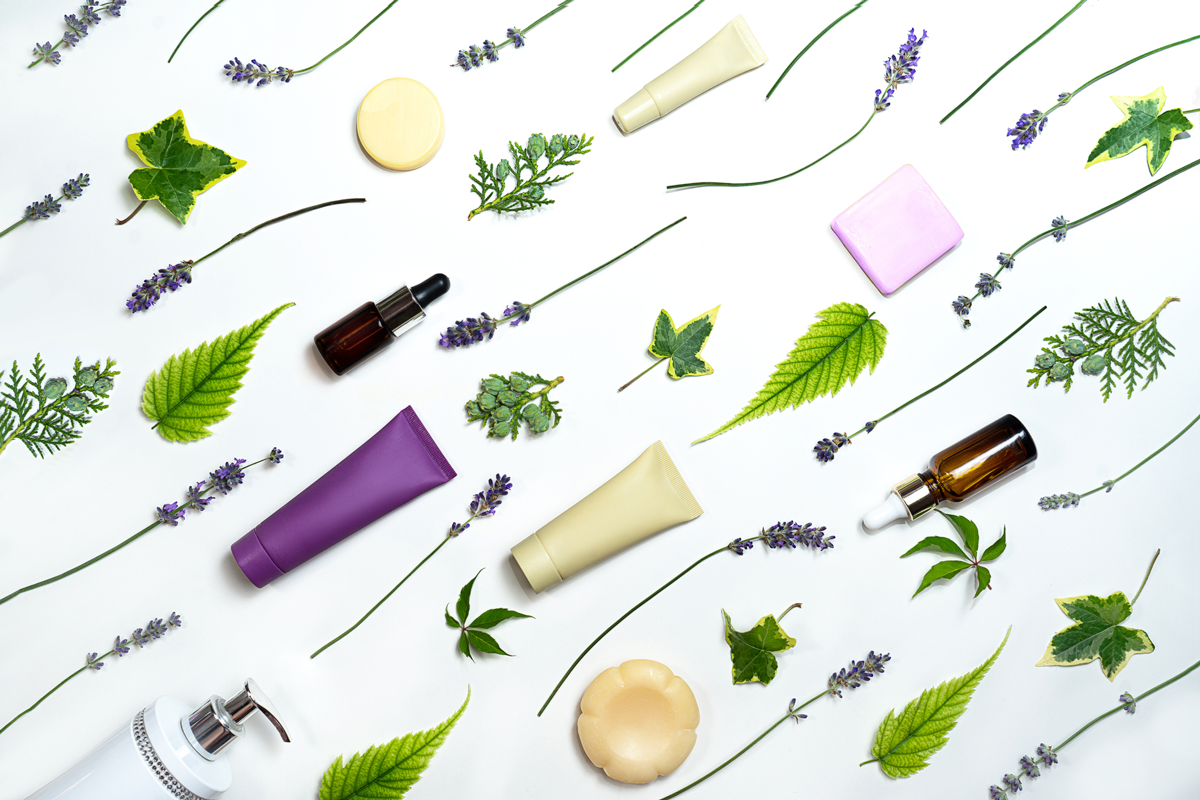Puberty. We all go through it, and… no one really loves every minute of it. You come out on the other side relieved that you do not have to relive it again. Except that now you’re a parent! So you do! Only this time, you’re worried about getting it right, not just getting to the other side. Which is why I couldn’t be more excited that for the ParentData podcast out today, I talked to Cara Natterson and Vanessa Kroll Bennett about their new book, This Is So Awkward: Modern Puberty Explained. This conversation has tons of helpful advice (as does the book), and we also get into answering the age-old question of why I still have hairy knees.
To spark your interest, here are a few highlights from today’s conversation:
Why did you write this book?
Emily Oster:
I actually want to start by telling you what happened when I gave [your book] to my spouse. I do not usually make him read books, because he is an extremely slow reader. And also before your book, the last thing he read was a history of the German central bank and it took him eight months. But I made him read the book.
And at some point, he said, “Oh, I get it. The core advice in this book is to have a good relationship with your kids so they will talk to you.” Which I actually thought was pretty insightful. Do you think that he’s right about that?
Vanessa Kroll Bennett:
Ultimately, I think he is right. There’s 100,000 other words in the book that get at a variety of biology and physiology and data and research. But really, the best way to keep kids healthy and safe is to be in conversation with them, have lines of communication with them, and that means giving them good, reliable information. That’s part of it. It’s not just chatting. It’s giving them good information that can help inform their choices, their life, their growing up.
Cara Natterson:
And if you have a good relationship with them, that’s a bonus. That’s the goal and that’s the hope. And we believe that the more honestly you speak with them, the better the relationship will be.
How do I talk to my teen about their body hair?
Vanessa:
We want to make room for all of the options and present a panoply of hair decisions, because the whole point of this entire exercise is to remove shame and judgment and let kids figure out what feels good and right to them. And by the way, social mores have completely shifted. My 13-year-old turned to me the other day and was like, “So when do I get my first manscaper?” And I was like, “Um, excuse me?”
Emily:
What’s that?
Vanessa:
Oh, you don’t know it. Okay. So a manscaper, it’s basically a trimmer for genital hair, for vulvas or around penises and testicles, but it’s a “manscaper” because it was marketed specifically to people with penises and testicles, because people with penises and testicles remove much or maybe all of their pubic hair in the way that many women have done for many, many decades. So this is not even a gendered thing. They also shave their legs. They shave their arms. They have their backs waxed. It is not gendered. Everybody is removing lots and lots of hair and then deciding to grow lots of hair in certain places. I don’t know if I can use this term, but what we used to call … a full bush. And then—
Emily:
1980s. Ladies at the pool clubs coming out from outside your bathing suits. It’s like that’s what you’re doing there.
Vanessa:
The YMCA. It’s my best memory of the YMCA. Or they grow all their armpit hair and they remove all their pubic hair. It’s like the mores of what we expected have gone out the window.
And so it’s not just being like, here’s the right razor. It’s opening your mind up to [the fact that] the world and our culture has completely changed around hair.
What’s the best way to make my teen feel safe?
Emily:
So you’ve said limits make teens feel safe. That seems like a familiar statement for parenting smaller kids. So is my teenager basically just a big 3-year-old?
Vanessa:
I think that there’s an impulsiveness and questionable decision-making. There’s a moodiness that feels reminiscent. There’s a desire to establish independence and to separate themselves from their parents and their trusted adults that is all very resonant of toddler years. It’s also a time where you have to say, “Listen, I’m going to give you some choice. I’m also going to lay down some parameters. And within those parameters, I’m going to give you a lot of decision-making opportunity and a lot of power and a lot of agency. And outside of that, you get what you get and you don’t get upset, or maybe you do get upset. But tough, kiddo.” And I think that that is really critical.
Cara talks about how teens actually want limits and they want parameters, and they don’t want us to be their friends. And even though it would be easier to roll over and make a joke out of it, just like with your toddler, when you did that, you were also up till midnight with a screaming kid who refused to go to bed, and we know how that sucked. So think of the teen equivalent of that with much higher stakes and much more discomfort, and that’s what you end up with. So it’s really best for everyone involved if they have some limits.
Cara:
When I used to be in the office, one of the most common pieces of advice I would give for parents of toddlers and kindergarten-age kids all the way up through grammar school, frankly, is mentally, in the back of their minds, pretend like your kid is 16 and asking for the car keys. Are you going to give them the car keys? And the answer is generally no, I’m not, actually. So those are the same touchpoints you can lean on throughout their entire growth and development trajectory in order to gauge your own limit setting. If you’re ready to hand them complete and utter independence, then don’t give them rules, don’t set limits, be hands-off, but that’s not what they need. And you know that and they know that.
There are great therapists out there who use the analogy of: you wouldn’t let your kid fly the plane. They’re interested in looking in the cockpit, but you’re not going to let them fly the plane. So it’s all part and parcel of the same thing. And this is what makes child-rearing hard. And child-rearing in 2023, and it’s only going to get worse, is the co-parents in the equation include the internet. So this is very complicated stuff. I will say it until I’m blue in the face: Kids of all ages tell us they like limits. Limits make them feel safe. They are guardrails that are supposed to be tested and they’re supposed to be pushed against, but they make kids feel safe.
Full transcript
This transcript was automatically generated and may contain small errors.
He’d be like, “Did you know?” And then I’d be like, “I didn’t know.” And I’m not using that information now. But I made him read the book. And at some point he said, “Oh, I get it. The core advice in this book is to have a good relationship with your kids so they will talk to you.” Which I actually thought was pretty insightful. Do you think that he’s right about that?
Now, flash forward to 2005 when an endocrinologist named Louise Greenspan joins a study that’s going to confirm Marcia Herman-Giddens’ data, because doctors love to do that. They love to take a study that was novel and say, is it true or is it not? And they studied this cohort between 2005 and 2010. And what do they find? They find that, lo and behold, girls are entering puberty even earlier. And that’s the data that we point to. It’s Greenspan’s data. And what it showed was the average age for entering puberty. And it was broken out by race and the racial groupings are very limited. It’s Caucasian or white, black and Hispanic is the language that they used. And it was onset of puberty for girls was between eight and nine. And if you were black, it was on the younger side and if you were Caucasian or white, it was on the later side, it was the nine. And if you were Hispanic, Latina, it was in the middle. No one looked at boys.
Herman-Giddens is gardening. She’s retired. She’s having a great life. She’s so frustrated by the fact that no one’s looking at boys that in 2012, she pulls herself out of retirement, does a small study of 4,000 boys and she says, “Ha. Boys are going through puberty early too.” And for them, she documents it’s between nine and 10 when they’re starting. That is measured by penile and testicular growth. And again, she used the same racial groupings and found the same trends. So when we say puberty is starting earlier, this is precisely what we mean. We mean that the average age of breast budding for girls in this country is now between eight and nine. And the average age of penile and testicular growth for boys is between nine and 10. But it’s not going any faster. It is actually going slower.
We can train them. We can help do role play and help them develop the language for that, but it’s not going to happen immediately. And that’s a place where I really believe adults step in.
On a separate racecourse, you’ve got the adrenal androgens. The adrenal glands are these little triangular … They look like little hats sitting on top of the kidneys. And they’re these super complicated glands. And their main job is to pump out hormones that guide a number of things, not sexual maturation. So cortisol is released from the adrenal glands. So when we have a stress response. But also DHEA and DHEA-S, which is just the sulfated version of DHEA. DHEA is what goes to your skin cells and tells the sweat glands to amp up the volume of sweat. It also tells the little oil producing gland in your pore to increase the oil production in certain parts of the body that have that capacity. Armpits, groin, feet, scalp. It also tells the hair follicle right there to start to grow a hair that has a new texture or a new color or a new thickness or all of the above.
And so it is the adrenal androgens that go out into the periphery of the body and tell the body to sprout hair, sprout sweat and sprout oil. And now you have an explainer for hair and acne and body odor. And it’s not about testosterone and estrogen, even though those hormones do play a role a little bit, because these are all cousin hormones. They’re like a big family. But they’re not racing at … Got to come up with a different track. In Miami. Does that make sense? And here’s the most important takeaway from that concept. Go back to what Vanessa was saying about people who look older than they are. Put pubic hair on a six-year-old and suddenly parents are rightfully-
Your kids, by the way, be prepared. They will ask about your sexual history. They will ask about your drug and alcohol history. It is a 100% guarantee. So when it’s that set of questions, you need to either be ready with your answer or pull yourself together and give yourself a breather. So when it comes to Phil, first answer might be, “That is such a great question. I need a minute before I can answer and give you all the information.” And here’s the second thing I would do. And this is the most powerful sentence that you can utter as a parent about anything. Get context. So if it’s from out of the blue and if the story is vague and not quite as specific, it’s, “That’s such an interesting question. What made you ask me that?” But with the Phil story, which is very specific, you might say something like, “Okay. Can you give me a little more color? How did it come up? What did the other kids say? I just have to get a sense of the situation.” Mostly to transport yourself back to middle school and have a moment of gratitude that you’re not there all day, every day.
But really, it’s to contextualize what they’re asking. Because, yes, they’re asking very specifically about a hand job, but there may be other questions that they’re asking, too. Or there may be questions they’re not asking. And you’re about to go down a road and give way too much information and they really have a narrow, narrow ask. Where I would start is, “Thank you so much for sharing that with me. That was amazing. I need a minute to collect my thoughts.” Then go find a resource. Whether it’s a person or maybe it’s our book or maybe it’s something else, and go look up some strategies about how to answer this question and go back to them. For me, it’s always not eye to eye. I usually will lay on my kid’s bed and look at the ceiling while they’re facing away from me, because that’s a much easier way to have the conversation and dive into your answer. So Vanessa, you want to pick up? Vanessa has so many more children than I do that she has lots of ways through.
So if you were not raised to have these conversations and it’s just too far outside your comfort zone, then just find someone who can be the appointed person and you and your kid will have to work on picking that person together. Often they will pick the right person, the person you would have picked. Often they will pick the very wrong person at first and you can guide their choice and maybe have a conversation.
Cara talks about how teens actually want limits and they want parameters and they don’t want us to be their friends. And even though it would be easier to roll over and make a joke out of it, just like with your toddler, when you did that, you were also up till midnight with a screaming kid who refused to go to bed and we know how that sucked. So think of the teen equivalent of that with much higher stakes and much more discomfort and that’s what you end up with. So it’s really best for everyone involved if they have some limits.
There are great therapists out there who use the analogy of you wouldn’t let your kid fly the plane. They’re interested in looking in the cockpit, but you’re not going to let them fly the plane. So it’s all part and parcel of the same thing. And this is what makes child-rearing hard. And child-rearing in 2023, and it’s only going to get worse, is the co-parents in the equation include the internet. So this is very complicated stuff. I will say it until I’m blue in the face. Kids of all ages, tell us they like limits. Limits make them feel safe. They are guardrails that are supposed to be tested and they’re supposed to be pushed against, but they make kids feel safe.
Community Guidelines












Log in